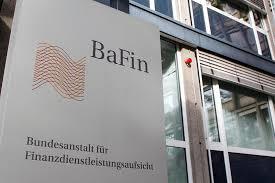Pension funds, and particularly defined benefit (DB) ones, are basically a bag of liabilities. These obligations have to be matched by both current assets and the future income stream. In the past 50 years, pension funds have benefited successively from high returns on equities, bonds, and equities again. Since September 2000 this luxurious situation seems over, however. A new investment approach is required. Relative returns are not good enough any more. Time has come to focus the investment industry on absolute return strategies.
In the developed world with its aging population, pension funds play a critical role to preserve future prosperity. Depending on the individual country, the economy’s ratio of elderly people will explode in the coming 15 to 20 years. A sound pension is therefore not just crucial for individuals, but also vital for society as a whole. In this respect, from a macro perspective, the old fashioned DB scheme is preferable over the defined contribution (DC) one. The latter not only leaves future income to the mercy of soaring markets, but also to sound investments.
On the other hand, pension funds have no miracles at their disposal either. At the most, they are better skilled than individuals to meet their obligations. But are they really, or has past performance been no more than sheer luck?
After all, in the 1950s and 1960s of the past century, equities generated very attractive revenues. Between 1950 and 1996, Wall Street produced an average annual return of 12.9%, while the inflation rate amounted to just over 2%. During the following years, with rising inflation and falling equity prices, money market funds and bonds took over as an alternative. The average long Treasury bond yield over the period 1969–92 amounted to 8.7% in nominal terms and 2.6% after the historically high inflation rate. Then finally the roaring equity bull came back again. Between its lowest point in August 1982 and the peak in September 2000, the MSCI showed an average annual total return of 15.6%. Between 1995 and 2000 the yield amounted to an astonishing 22.3% per year. And inflation hovered around 2.5%.
Unfortunately, the party is over for the time being. Not only have equities dwindled in the past two years, bonds and money market rates do not offer an alternative. The current fixed income yields are too low to offer sufficient compensation for the growth of liabilities. What is worse, many pension funds face an acute solvency risk.
The Dutch pension fund legislation, for example, requires a coverage rate of at least 100%. Liabilities have to be fully matched by the existing assets. Due to a combination of falling equity prices, a historically high allocation to this asset class (47% on average end 1991), rocketing liabilities in the preceding years and too low or even negative contributions, about 35% of Dutch pension funds faced serious difficulties in September 2002. Over 50% of all funds have reached the danger area below the 110% coverage rate. Among those are giants like the civil servants pension fund ABP (€150bn asset under management) and PGGM. Just two years earlier the average coverage rates in the Netherlands fluctuated around 140%. It’s all in the game.
The big problem for under funded pension funds, moreover, is that they may be forced out of equities to reduce risk in the short term. This can result in a prisoner’s dilemma, since the disposal of more risky assets inevitable reduces the opportunity of higher returns in the long term.
It is fair to conclude that pension funds, particularly those with DB schemes, need either a rapid recovery of the equity markets or much higher bond yields. Otherwise, a combination of considerably higher contributions, a cutting down of the benefits and a shift in the investment policy will be imminent. While equity markets appear not to have reached a rock bottom so far, the case for towering bond yields looks even more unrealistic. For employees and labour unions, a sudden change from DB to DC schemes is and should be indisputable, since it would pass the burden of wealth generation on the future savers.
A sweeping shift in the investment strategy may be unavoidable. Let’s start at the beginning. DB pension funds are a bag of liabilities. That is hard fact. Even if benefits are made less generous and full indexation is not retained, inflation and wage increases will propel liabilities by 5 to 8% per year in the coming decade. In the past 10 years the average growth amounted over 12% despite relatively low inflation. Looking into the future, the ageing problem can result into fewer people that contribute and more pensioners that hope to benefit. Moreover, the impact of the maturing population on productivity and thus on earnings capacity is indistinct as yet. Risks are consequently on the upside. A lower liability growth rate than 5% is not to be expected.
Pension funds have the objective of counterbalancing these expanding obligations with their assets. Unfortunately, most assets are not hard; they are only an accumulation of volatile ‘hope and expectations’.
The main challenge for every DB pension scheme is constantly to find assets that, at any given moment, generate a mix of sufficient income and security to meet existing and future liability requirements. The name of the game is no longer relative performance, but real, absolute. This requires a revolution in the way of thinking of pension funds and asset managers. After all, they all prefer to be measured in a relative way and excessively paid accordingly. While the rewards of relative thinking fully settles on the trustees, the absolute risk of investing is passed on to the sponsor and the future pensioners. Indeed, the forecasting of absolute returns with a shorter horizon than the sheer infinite one of ALM studies may demand quite some additional and complicated skills. Particularly in the Anglo-Saxon world, top level asset allocation gets pretty little attention or appreciation and thus recourses by contrast to stock picking. The number of strategists within most asset management firms is fairly limited. It is hard to capitalise on strategic thoughts and write a ticket straight away. Also, the tools employed are much less developed and refined than those for country, sector and predominantly title selection.
Equities undisputably outperform all other asset classes and should continue to do so in the foreseeable future. That might be true for the very long term. During shorter intervals of 30 years the opposite can be the case, as history teaches.
So, if cash, bonds and equities do not offer sufficient absolute return, pension funds have to look for better yielding alternatives. Hedge funds seem an appealing choice nowadays. Unfortunately, the once exclusive domain of the smartest people in the entire business has decayed to a playground for avaricious, self-proclaimed investors. Most hedge funds evaporate during the first 18 months. Only a few are successful. Moreover, exuberant fees weigh heavily on the not very impressive average performance over the last 10 years (let alone for the survival bias). On balance, finding winning hedge funds with ample capacity often ends in a big disappointment.
Another alternative is a combination of physical shares and derivative strategies. Also here, the lack of transparency and the sometimes high opportunity costs frustrate the wide use of this option. Besides, it is fairly hard to convince the board of trustees of a pension fund to make use of these policies on a wide scale, since most still consider derivatives a ‘jack-in-the-black-box’.
With real estate, commodities and other tangible assets the long term experience is mixed as well. Despite indisputable diversification advantages on a portfolio level, their volatility can result in a surprisingly strong performance in one period, to disappoint devastatingly in the next.
This brings us to where pension funds and their asset managers can seize their chances. Instead of rigidly playing asset classes the relative way, investors should search for absolute return in every possibility that is available during a particular period. Most trends persist long enough to reap the fruit of their flowering without changing the asset mix so often that transaction costs overgrow the harvest. However, such an investment policy demands the flexibility and approval to rapidly adopt and implement new ideas. Moreover, it requires disciplined decision rules to avoid acting on noise, and the appropriate trading instruments to implement portfolio adjustments with minimal costs and market impact.
The time has come to stop hiding behind – and paying for – excess returns and tracking errors. Pension funds need to demand a change towards absolute return and risk. The 21st century requires a top level dynamic asset allocation strategy that is flexible, extremely disciplined, (absolute) risk controlled and broadly diversified. This is a tempting challenge for the industry in a world of fixed liabilities and volatile assets.
Philip Menco is with Fortunis Investment Consultancy in Amsterdam and is an independent adviser helping on the restoring of pension funds and implementing their investment policy



























No comments yet